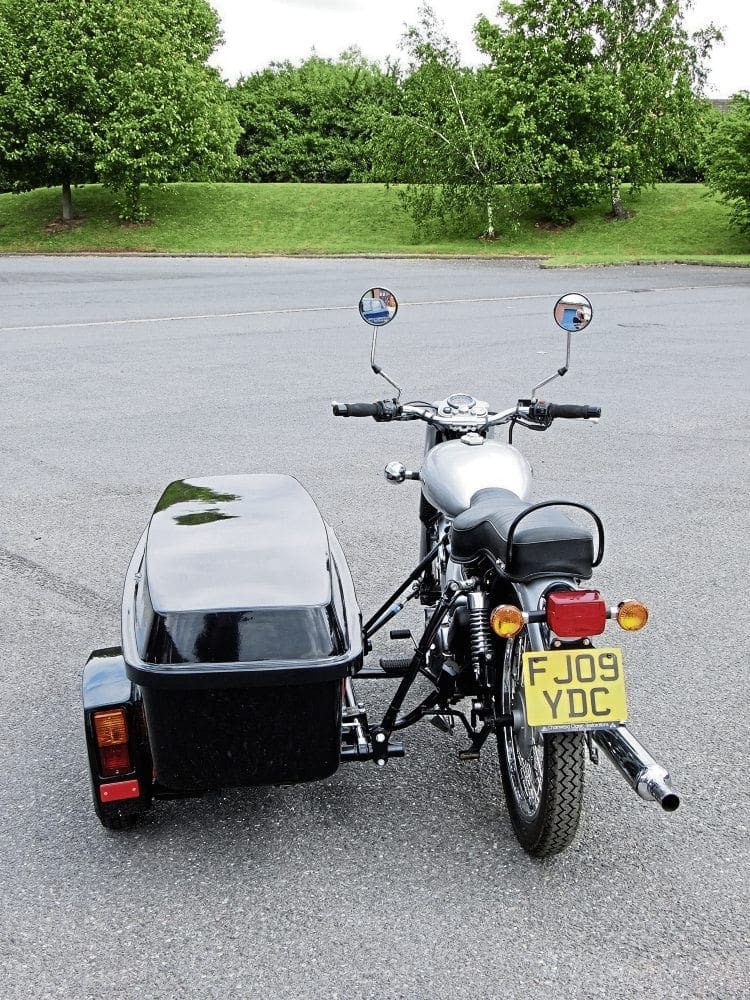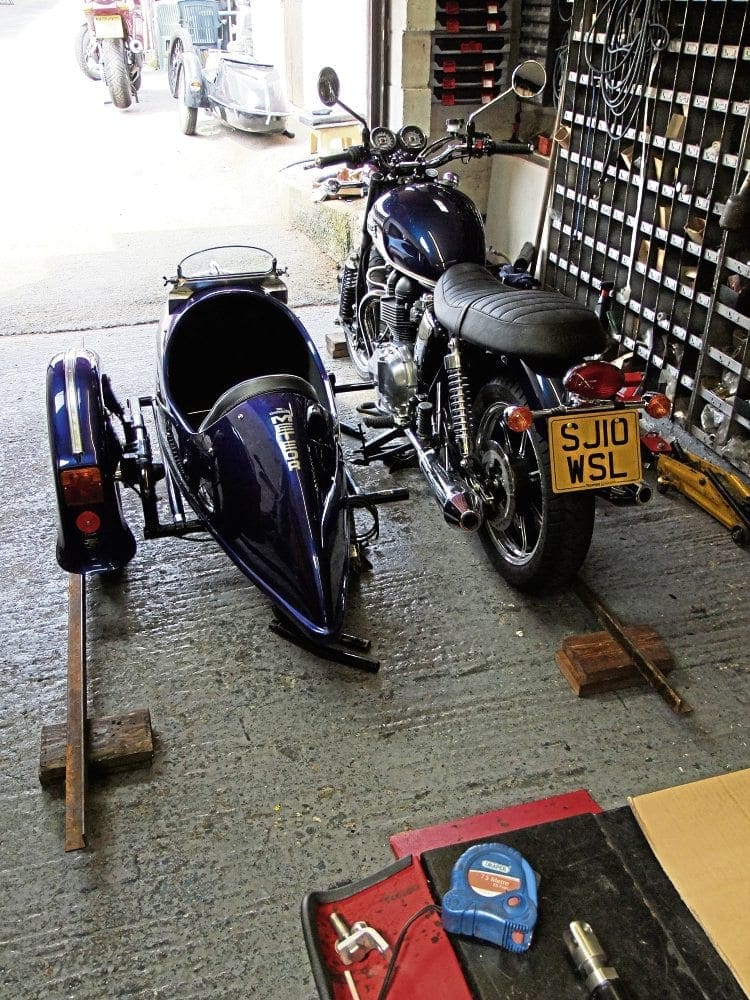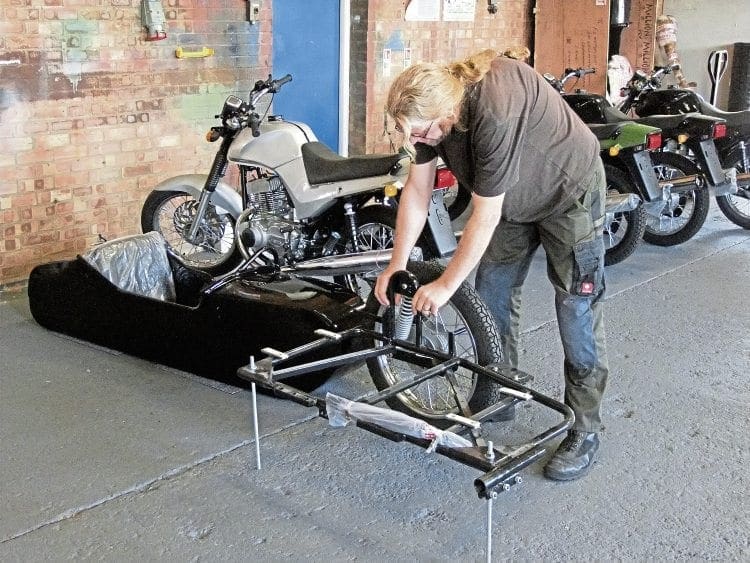When you’re setting up a sidecar, the smallest of adjustments can make all the difference to handling. Mick Payne trawls around to get the opinions of today’s specialists in the field.
Last month I tried to give an insight into the various alignments necessary to keep a sidecar outfit handling as well as possible. This month the experts have their say, and what experts they are – Watsonian Squire, Jim D’Arcy and Velorex/Ural expert, David Angel, all have their own opinions.
Ben, of Watsonian Squire, said: “We always start with the same base setting, which is 0.5in toe-in and the same for lean-out with lead usually 20% of the bike’s wheelbase – everyone has his own view on this, but we’ve probably fitted more sidecars than anyone else in the UK, and this is what works best as a starting point for us. Small tweaks can be made later if required.”
Enjoy more Old Bike Mart reading every month.
Click here to subscribe & save.

David Angel’s starting point is: “If it’s an old 60s/70s bike with a classic chair and you want that vintage feel, go for 6in axle lead and about 1in toe-in, but just 0.2in of lean-out.
A more modern set-up for greater stability at speed would be somewhere between 8.6 and 10 in for axle lead with just 0.6 mm toe-in and again 0.2 lean-out. Rigids are set up in the same way, except that you don’t need to allow for sag in the rear end. My recommendations can be seen in my fitting guide at www.simplysidecars.co.uk/fittingguide.html”.

Jim D’Arcy would want to know the weight of both rider and passenger as well as the use of the outfit before committing himself to any figures, so he gave his rough starting point, and his thoughts will have to wait until next month.
Small tweaks are not always easy, however. My first outfit was an MZ ETZ250 and Squire Dart chair, and this had no real adjustment at all.
The front mounting, a curved tube, was bolted through the steering stem and also comprised the much-needed friction steering damper, while the rear one was affixed to the top of the rear damper and ran vertically downwards before curving into the chassis.
There was a further tube around mid-point that ran more or less beneath the left footrest out to the chassis.

These mountings had no real triangulation, and as I said before, very little scope for adjustment, although when bought as a complete unit they were set up on a jig at the then importer Wilf Green’s.
It was delivered by Mick Surman, then an MZ dealer, and for my first-ever sidecar ride I took it round the block, anti-clockwise (my reasoning being that I wouldn’t have to cross any traffic).
Unfortunately, the empty sidecar nearly put me off chairs for life. I’d actually built up a bit of speed before the penultimate corner approached, so before attempting to turn, I braked, swerved right, and fought it back leftwards with the chair rapidly rising to meet me and leaving me heading for the gap between two traffic islands!
Stopped and swallowing hard, I swore to get some ballast in the sidecar.

Nowadays, though, I might have blamed it on too much sidecar wheel lead, as this can cause the chair to lift sharply on left-handers.
However I went on to cover thousands of miles on that old outfit, so maybe the set-up wasn’t too bad after all!
I’ll be returning to the subject next month.

Read more News and Features at www.oldbikemart.co.uk and in the latest issue of Old Bike Mart – on sale now!




